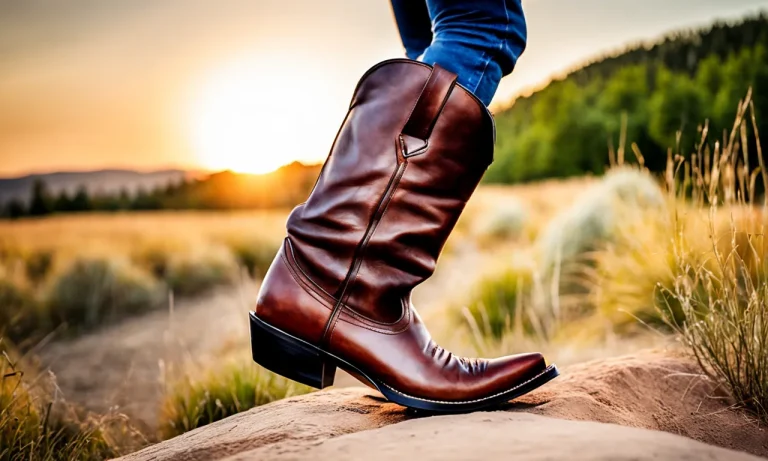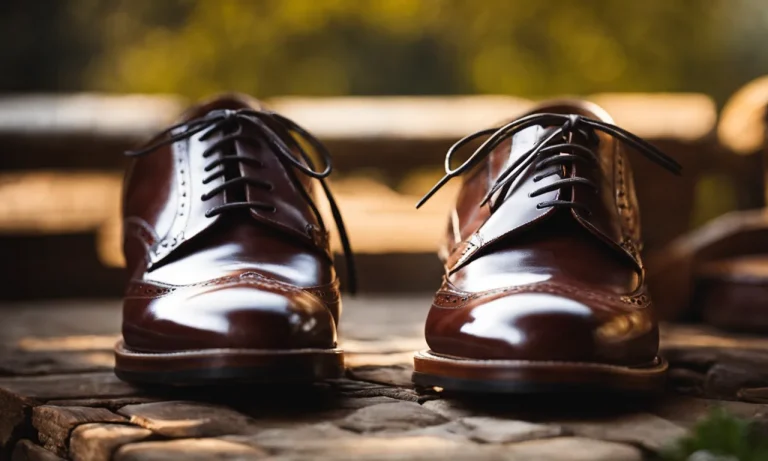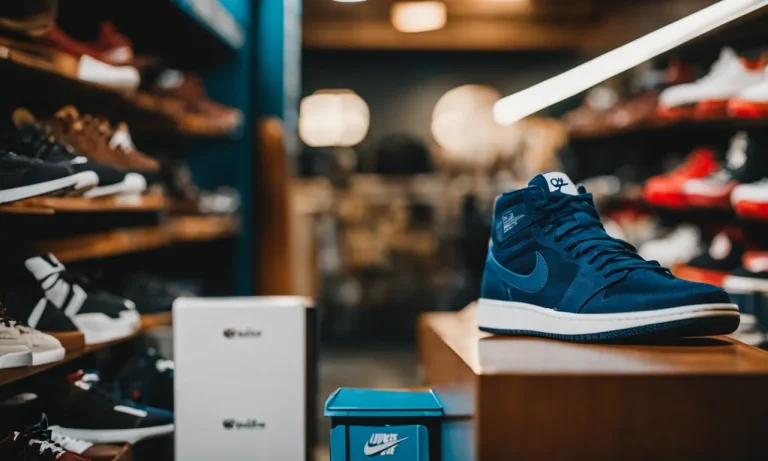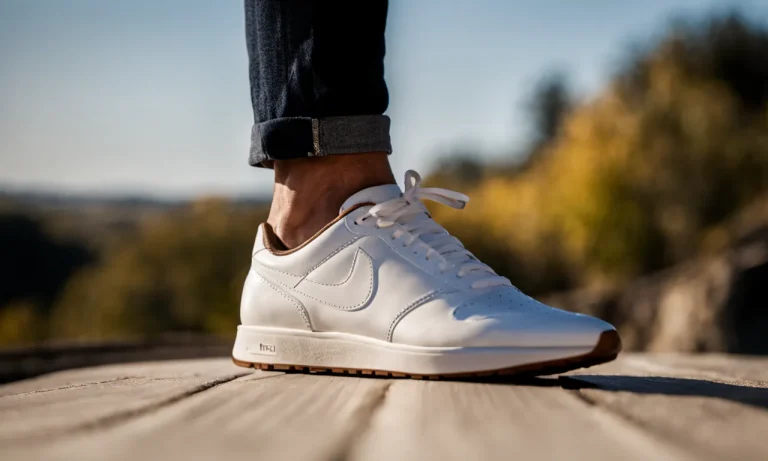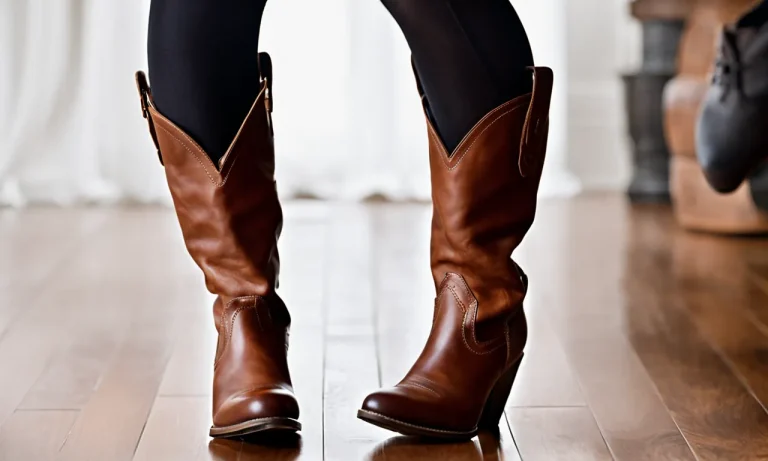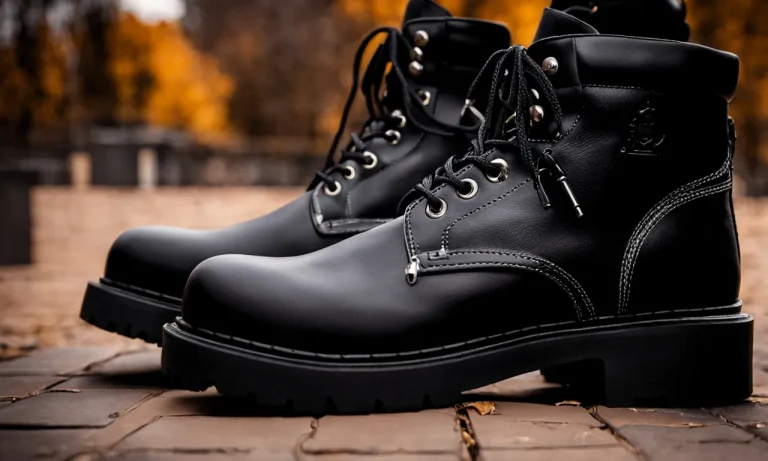Buying shoes can be tricky when your feet are half sizes. If one foot is a size 8 and the other is an 8.5, what size shoe should you get? We’ve all been there – trying on multiple pairs to get the perfect fit for our unique feet.
If you’re short on time, here’s a quick answer: Go with the larger half size, or size up to the next whole size. The small amount of extra room allows your feet to spread out comfortably.
In this comprehensive guide, we’ll cover everything you need to know about half shoe size differences. You’ll learn the best approaches for getting a great fit, how sizing varies between brands, tips for narrow and wide feet, kids shoe sizing, and much more.
What Causes Half Size Differences in Feet
Having one foot slightly larger or smaller than the other is a common occurrence for many people. This difference in size, known as a half size difference, can be attributed to various factors.
Genetic Factors
Genetics play a significant role in determining the size and shape of our feet. It is not uncommon for individuals to inherit a half size difference in their feet from their parents. This is due to the fact that genes determine the growth patterns and proportions of our bodies, including our feet.
So, if one of your parents has a half size difference in their feet, there is a higher chance that you may experience the same.
Developmental Changes
During the growth and development stages, our bodies undergo various changes, and this can also affect the size of our feet. As we age, our feet can grow at different rates, leading to a half size difference.
This is particularly common during puberty, as hormonal changes can impact the growth of bones and tissues. So, if you notice a half size difference during your teenage years, it may be attributed to these developmental changes.
Injuries and Medical Conditions
Injuries and medical conditions can also contribute to a half size difference in feet. Trauma to the foot, such as a fracture or sprain, can alter the shape and size of the foot, leading to a noticeable difference.
Additionally, medical conditions such as arthritis or conditions affecting the nerves and muscles can also cause one foot to be larger or smaller than the other. If you suspect that an injury or medical condition is the cause of your half size difference, it is recommended to consult with a healthcare professional for further evaluation and guidance.
Understanding the causes behind half size differences in feet can help individuals better comprehend their own unique foot characteristics. It is important to remember that having a half size difference is normal and does not typically cause any significant issues.
If you experience discomfort or difficulty finding well-fitting shoes, consider consulting with a podiatrist who can provide guidance and recommendations for proper footwear.
Getting the Right Fit with Half Sizes
When it comes to finding the perfect fit for your shoes, half sizes can make a big difference. Whether you have narrow or wide feet, or simply want to ensure maximum comfort, getting the right size is essential. Here are some tips to help you navigate the world of half sizes.
Go Up to the Next Whole Size
If you find yourself in between two sizes, it’s generally recommended to go up to the next whole size. This can help prevent any discomfort or squeezing of the toes. Remember, it’s better to have a little extra room than to have your toes cramped and uncomfortable.
Try Both Sizes On
Sometimes, it can be difficult to determine exactly which size is right for you. In this case, try on both the smaller and larger half sizes and see which one feels more comfortable. Pay attention to how your toes feel and whether there is any pressure or pinching.
It’s always best to try before you buy!
Consider the Style of Shoe
It’s important to keep in mind that different shoe styles may fit differently, even within the same brand. For example, a half size difference in a pair of heels may not make as much of a difference as it would in a pair of running shoes.
Take into account the specific style and type of shoe you are purchasing to ensure the best fit.
Size Up for Athletic Shoes
When it comes to athletic shoes, many experts recommend sizing up by at least half a size. This is because our feet tend to swell during physical activity, and having a little extra room can prevent discomfort and blisters.
Additionally, it’s important to consider the type of socks you will be wearing while exercising, as thicker socks may require a larger size.
Break-in Period
Keep in mind that some shoes may require a break-in period, especially if they are made of certain materials or have a specific design. Don’t be discouraged if your shoes feel slightly snug at first, as they may stretch and mold to your feet over time.
However, if you experience persistent pain or discomfort, it’s best to try a different size or style.
Remember, getting the right fit with half sizes is all about finding what works best for you. Everyone’s feet are unique, so don’t be afraid to experiment and try different sizes until you find the perfect fit.
Half Size Variations Between Shoe Brands
Some Brands Run Large
When it comes to shoe sizes, one thing to keep in mind is that not all brands are created equal. Some brands tend to run larger than others, which means that you may need to size down if you’re in between sizes.
For example, if you typically wear a 7.5, you may find that a size 7 in certain brands fits you better. It’s always a good idea to try on shoes before making a purchase, especially if you’re unsure about the sizing.
While Others Run Small
On the flip side, there are brands that tend to run smaller. This means that if you usually wear a 7.5, you may need to size up to an 8 in these brands. It’s important to note that this variation in sizing is not limited to just high-end or luxury brands.
Even affordable shoe brands can have differences in sizing. To ensure a comfortable fit, it’s best to try on shoes or check the brand’s sizing chart before making a purchase.
European vs. American Sizing
Another factor to consider when it comes to shoe sizes is the difference between European and American sizing. European sizes are typically measured in centimeters and tend to have a more precise fit compared to American sizes.
To convert your shoe size from European to American, you can use a conversion chart or consult with a salesperson at a shoe store. Keep in mind that this conversion is not always exact, so it’s still important to try on shoes to ensure the best fit.
Tips for Consistency
Dealing with half size variations between shoe brands can be frustrating, but there are a few tips you can follow to help maintain consistency in your shoe size. Firstly, get to know your foot measurements and keep them handy when shopping for shoes.
This will help you make more accurate size choices, especially when ordering online. Secondly, pay attention to customer reviews and feedback to see if a particular brand tends to run large or small. Lastly, if you find a brand that consistently fits you well, stick with it.
Building a relationship with a reliable shoe brand can save you time and effort in the long run.
Special Considerations for Narrow and Wide Feet
Wide Feet May Need Full Sizes Up
If you have wide feet, finding the right shoe size can be a challenge. Many shoe manufacturers offer wide width options, but sometimes even those may not provide the perfect fit. In such cases, it is recommended to go up a full size to accommodate the width of your feet.
This will help prevent discomfort and potential foot problems in the long run. Remember, a shoe that is too narrow can cause pain, blisters, and even bunions.
Narrow Feet Can Size Down
On the other hand, if you have narrow feet, you may find that your regular shoe size feels a bit loose or roomy. In this case, sizing down might be a good option. Going down half a size or even a full size can help provide a snug fit for narrow feet.
This will prevent your feet from sliding around inside the shoe and ensure better stability and support.
Try Different Width Options
It’s important to note that shoe sizes not only vary in length but also in width. If you have either wide or narrow feet, it’s worth exploring different width options available from shoe manufacturers.
Some brands offer shoes in multiple width options, such as narrow (N), medium (M), wide (W), and extra wide (XW). Trying different width options can greatly enhance the comfort and fit of your shoes.
Lace Styles Make a Difference
Believe it or not, the way you lace your shoes can also make a difference in how they fit. For individuals with wide feet, using the “window lacing” technique can provide additional room in the forefoot area.
This involves skipping a few eyelets in the middle of the lacing pattern, creating a wider opening. On the other hand, individuals with narrow feet can try the “lace lock” technique, which involves looping the laces through the top eyelets to create a tighter fit around the ankle.
Remember, finding the right shoe size is crucial for your overall foot health and comfort. If you are unsure about your shoe size or have specific concerns, it is always recommended to consult with a professional shoe fitter or a podiatrist.
Proper Sizing for Kids’ Shoes
Allow Growing Room
When it comes to buying shoes for kids, allowing room for growth is crucial. Children’s feet grow rapidly, and it’s important to provide them with enough space to accommodate this growth. Experts recommend leaving a thumb’s width of space between the end of the shoe and the tip of the child’s longest toe.
This will ensure that the shoe is not too tight and will allow for comfortable movement. Remember, a shoe that is too tight can cause discomfort and hinder proper foot development.
Prioritize Comfort and Fit
The comfort and fit of a shoe are of utmost importance, especially for children. Shoes that are too tight or too loose can cause discomfort or even lead to foot problems. It’s essential to choose shoes that provide adequate support and cushioning.
Look for shoes that have a flexible sole, a wide toe box, and good arch support. Additionally, opt for materials that allow the feet to breathe, such as leather or mesh. Prioritizing comfort and fit will ensure that your child can move around freely and avoid any potential foot issues.
Measure Feet Frequently
Children’s feet can grow quickly, sometimes even half a size within a few months. Therefore, it’s important to measure their feet frequently to ensure that they are wearing the correct size. Use a shoe measuring device or consult a shoe specialist to get an accurate measurement.
Keep in mind that foot size can vary between brands, so it’s essential to measure each time you buy new shoes. By regularly measuring your child’s feet, you can avoid purchasing shoes that are too small or too big, which can cause discomfort and affect their foot health.
Consider Foot Development
Children’s feet go through various stages of development, and it’s essential to consider this when buying shoes. For instance, infants and toddlers have soft and flexible feet that are still forming. It’s recommended to choose soft-soled shoes that allow their feet to move naturally.
As children grow older and begin walking more confidently, shoes with more structure and support become necessary. Understanding the different stages of foot development can help you choose shoes that promote healthy foot growth and development.
When to Seek Professional Help for Fitting
Getting the perfect fit for your shoes is essential for comfort and foot health. While most people can find the right size by simply trying on different shoes, there are instances where seeking professional help for fitting is necessary.
Here are a few situations where you should consider consulting a professional:
Persistent Discomfort
If you experience persistent discomfort or pain while wearing shoes, especially after trying different sizes, it may be time to seek professional help. A podiatrist or a shoe fitting specialist can examine your feet and determine if there are any underlying issues causing the discomfort.
They can provide recommendations for shoe types and sizes that will alleviate your discomfort and prevent further foot problems.
Drastic Size Differences
If you have a significant difference in size between your feet, such as a half shoe size or more, it can be challenging to find shoes that fit properly. In such cases, professional help can be invaluable.
A shoe fitting expert can measure both of your feet accurately and recommend shoes that cater to the size difference. They may suggest specific shoe brands that offer different size options for each foot or guide you towards customized shoe solutions.
Medical Conditions
If you have a medical condition that affects your feet, such as bunions, arthritis, or diabetes, it is crucial to seek professional help for shoe fitting. These conditions can alter the shape and structure of your feet, making it difficult to find comfortable shoes.
A podiatrist can assess your condition and provide recommendations for shoes that accommodate your specific foot needs. They may also suggest orthotic inserts or other foot support devices to alleviate any pain or discomfort caused by your medical condition.
Proper Children’s Growth
Children’s feet grow rapidly, and it is essential to ensure they wear shoes that fit properly to support their foot development. If you notice that your child’s feet are rapidly outgrowing their shoes or if they complain of discomfort while wearing them, it is advisable to seek professional help.
A children’s shoe fitting specialist can measure your child’s feet accurately and recommend appropriate shoe sizes and styles. They can also provide guidance on proper foot care for children, ensuring healthy foot development as they grow.
Remember, seeking professional help for fitting shoes is not a sign of weakness or incompetence. It is a proactive step towards ensuring optimal foot health and comfort. Professionals in the field have the expertise and knowledge to guide you in finding the right shoes for your unique foot requirements.
Don’t hesitate to reach out to them for assistance when needed!
Conclusion
Having one foot a half size bigger or smaller than the other is extremely common. While it can make shoe shopping a bit more challenging, focusing on fit and comfort over size numbers will ensure you find footwear that feels great.
Remember to always go with the larger half size or size up when between whole sizes. Allow enough room for your feet to spread out and toes to move. With the tips provided in this guide, you can confidently tackle any shoe shopping trip and get the perfect fit for your unique feet!

